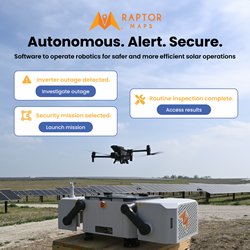New Resource: Energy Storage Procurement Guidance Document for Municipalities
A new energy storage procurement guidance document from Sandia National Laboratories offers useful information for states, municipalities, project developers and end users to consider as they develop solicitations for energy storage projects.
Montpelier, VT - A new energy storage procurement guidance document from Sandia National Laboratories offers useful information for states, municipalities, project developers and end users to consider as they develop solicitations for energy storage projects. This document was created by Sandia in partnership with Clean Energy Group and the Clean Energy States Alliance (CESA). The guide includes two sample Request for Proposal (RFP) templates and a matrix of elements to include in both utility-scale and behind-the-meter energy storage projects.
"As interest in energy storage continues to increase and many potential owners become involved in actual projects, a guide to effective procurement will be an essential tool for successful deployment of storage," says Dr. Imre Gyuk from the U.S. Department of Energy Office of Electricity Delivery and Energy Reliability who funded the work. Additional funding was provided by Barr Foundation.
The document was originally drafted as a resource for Massachusetts Department of Energy Resources' Community Clean Energy Resilience Initiative awardees, but it is now available for use by any entity soliciting energy storage proposals.
The materials are designed to give specific examples of the elements that should be included in a solicitation for the procurement and installation of a battery energy storage system.
"This document brings together all of the lessons we have learned from a wide variety of energy storage projects world-wide and makes that information available for use" said Sandia Technical Project Lead Dan Borneo.
Included in this package are:
• Matrix of elements to include in a Request for Proposals
• Template for Request for Proposals for behind-the-meter energy storage projects
• Template of a Request for Proposals for utility-scale energy storage projects
The matrix serves as a checklist of items that should be included in an energy storage RFP. It also suggests information that should be provided in the RFP and questions that should be asked of potential vendors. Finally, the matrix includes information on what to look for in vendor responses.
Since the details are different depending on the scale of the project, the two templates address the specifics for utility-scale and behind-the-meter energy storage projects. The templates serve as examples of the layout, language, and specifications that could be included in an RFP.
This document is available at http://www.sandia.gov/ess/publications/SAND2016-6120.pdf and at http://cesa.org/resource-library/resource/energy-storage-procurement-guidance-documents-for-municipalities.
Some of the information in this document was previously presented in a webinar on the topic of energy storage procurement. This webinar, "Procurement Guidance for Energy Storage Projects: Help with RFIs, RFQs and RFPs," is available at: http://cesa.org/webinars/procurement-guidance-for-energy-storage-projects-help-with-rfis-rfqs-and-rfps/. The webinar was a production of the Energy Storage Technology Advancement Partnership (ESTAP). Learn more about ESTAP at: http://cesa.org/projects/energy-storage-technology-advancement-partnership/.
###
CONTACT:
Todd Olinsky-Paul, Project Director
Clean Energy States Alliance/ Clean Energy Group
todd@cleanegroup.org
Ph: 802-223-2554 x207
C: 845-625-8807
About U.S. Department of Energys Energy Storage Program
The U.S. Department of Energys Office of Electricity Delivery and Energy Reliability manages the Energy Storage Program under the direction of Dr. Imre Gyuk. The Energy Storage Program funds research and development work for a wide variety of energy storage technologies. The Program collaborates with industry partners, utilities, and state energy organizations, and is the chief funder of CESAs Energy Storage Technology Advancement Partnership (ESTAP). More information on the U.S. DOEs Energy Storage Program is available at http://energy.gov/oe/services/technology-development/energy-storage.
About Sandia National Laboratories
Sandia National Laboratories is a multi-program laboratory operated by Sandia Corporation, a wholly owned subsidiary of Lockheed Martin Corp., for the U.S. Department of Energys National Nuclear Security Administration. With main facilities in Albuquerque, N.M., and Livermore, Calif., Sandia has major R&D responsibilities in national security, energy and environmental technologies and economic competitiveness. Learn more about Sandia National Laboratories at http://www.sandia.gov/.
About Clean Energy States Alliance
The Clean Energy States Alliance (CESA) is a national, nonprofit coalition of public agencies and organizations working together to advance clean energy. CESA members—mostly state agencies—include many of the most innovative, successful, and influential public funders of clean energy initiatives in the country. CESAs Energy Storage Technology Advancement Partnership (ESTAP) is a federal-state funding and information sharing project that aims to accelerate the deployment of electrical energy storage technologies in the U.S. Learn more at www.cesa.org.
About Clean Energy Group
Clean Energy Group is a leading national, nonprofit advocacy organization working on innovative technology, finance, and policy programs in the areas of clean energy and climate change. Clean Energy Group also manages the Clean Energy States Alliance, a coalition of state and municipal clean energy funds. Clean Energy Groups Resilient Power Project is designed to help states and municipalities with program and policy information, analysis, financial tools, technical assistance, and best practices to speed the deployment of clean, resilient power systems in their communities. For more information, visit www.cleanegroup.org and www.resilient-power.org.
Featured Product

